Side-by-Side Feature Comparison
📌 Note: Keep in mind that this is an iPhone app comparison. If you prefer to compare email service providers instead, check out our Gmail vs iCloud piece.
Is Apple Mail better than Gmail? Or is Gmail a more efficient email app for iPhone? Let’s start with a comparison of some common features you should keep in mind when making your decision.
| Feature / Metric | Gmail App | Apple Mail (with Gmail configured) |
|---|---|---|
| Push notifications | ✅ Yes | ❌ No (for Gmail) |
| Search | Search operators and AI-powered search for eligible subscribers | Natural language and Siri-powered search |
| Thread management | ✅ Yes | ✅ Yes |
| Attachment handling | Typically fast retrieval and loading of attachments | Can be slow to load attachments due to Gmail’s “fetch” delivery |
| Offline access / Caching | ✅ Yes | ✅ Yes |
| Privacy / Tracking | Two-step verification, Confidential mode, Encryption | Mail Privacy Protection, Hide My Email, Encryption |
| Battery / Performance | May consume more battery as a third-party app with background activities | Optimized performance as a native iOS app |
Pros and Cons — Gmail App
Along with a feature comparison, you should also consider the pros and cons of each when deciding between Gmail vs the Mail app on iPhone. We’ll start with Gmail.
👍🏼 Key Advantages
- Integrates well with Google services like Keep, Tasks, and Calendar.
- Accessible on any device via the app or a web browser.
- Instant notifications.
- More powerful search capabilities.
👎🏼 Key Disadvantages
- Ads, ads, ads.
- Privacy concerns due to the scanning for targeted advertising.
- Gemini AI for Gmail only provides limited features for free like Smart Reply and Smart Compose. Advanced Google Gemini features cost around $20 per month.
Pros and Cons — Apple Mail (for Gmail)
On the opposite side of the iPhone Mail vs Gmail app debate are the advantages and disadvantages of using Apple Mail for Gmail on your mobile device.
👍🏼 Key Advantages
- Integrates well with Apple services like Notes, Reminders, and Calendar.
- Seamless syncing across Apple devices.
- Multiple accounts are easy to add and use the same features.
- Apple Intelligence for Mail is free and helps you rewrite and proofread emails.
👎🏼 Key Disadvantages
- Only accessible on Apple devices.
- Delayed notifications for Gmail which uses “fetch” for delivery.
- Less effective spam filters.
Real‑User Insights and Feedback
To see if there is a consensus for the “Should I use the Gmail app or Mail on iPhone?” question, we went to Reddit. Here’s what we found:
On one hand, many users find the Gmail app to be messy and clunky. Additionally, a few users expressed disappointment with the ads they see in the Gmail app and choose to use Mail because of it.
On the other hand, some find the Mail app to be slow and buggy. But, the majority of complaints about using Mail for Gmail is the lack of push notifications. One user even mentioned that they would switch to Mail from Gmail if that wasn’t an issue.
📌 All in all, of the 50+ comments on this Reddit topic, the majority seems pleased using the Apple Mail app rather than the Gmail app on iPhone.
Recent Updates for Gmail and Apple Mail on iPhone
Have you missed a new feature in the Gmail or Mail app on iPhone? As of this writing, below are the latest features added to both mobile apps.
Latest Version of Gmail on iPhone
- Ability to block senders.
- Unified inbox.
- New formatting options like color and bold.
- Improved security for suspicious senders.
💡 Tip: To update the Gmail app, visit the App Store on your iPhone, search for “Gmail,” and tap Update.
Latest Version of Apple Mail on iPhone
- Inbox categories including Primary, Transactions, Updates, and Promotions.
📌 See also: How to Turn Off Categories in iPhone Mail in 2025.
- Contact photos as visual identifiers.
- Message bundling.
- Verified sender logo display.
💡 Tip: The Apple Mail app updates automatically with new features and options when you receive an iOS update.
How Clean Email Can Help Regardless of App Choice
Regardless of which app you choose on iPhone, Gmail or Apple Mail, your Gmail inbox can get cluttered. But with proper message management using tools like Clean Email, you can maintain a tidy mailbox without extra work.
Clean Email is a supplementary app that works in the background to help you reclaim your inbox and reduce distractions. Below are just a few smart features you’ll enjoy with Clean Email:
- Smart Folders: Pre-made folders that filter related emails automatically. There are over 30 Smart Folders for things like Social Notifications, Online Shopping, Travel, and Food Delivery.
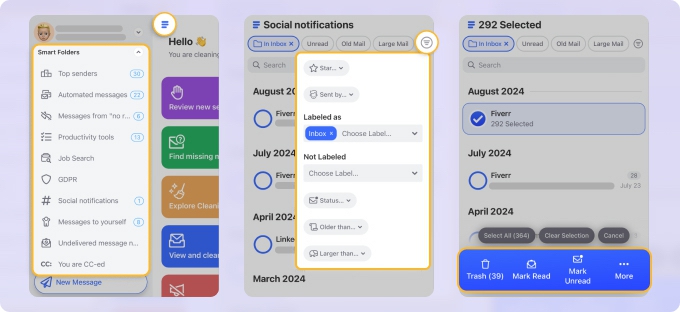

- Unsubscriber: Subscription management tool that lets you stop or pause newsletters and marketing messages. The tool also provides a bulk unsubscribe option on iPhone for removing yourself from multiple mailing lists at once.
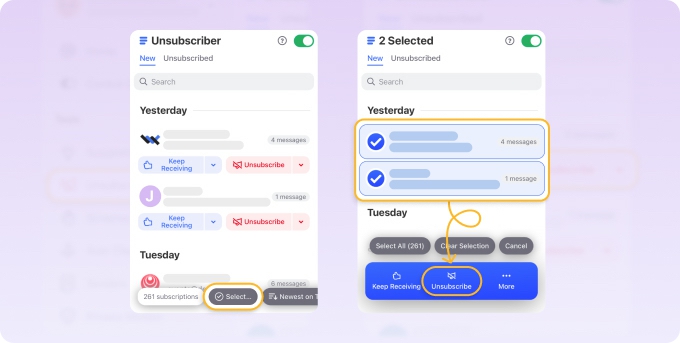
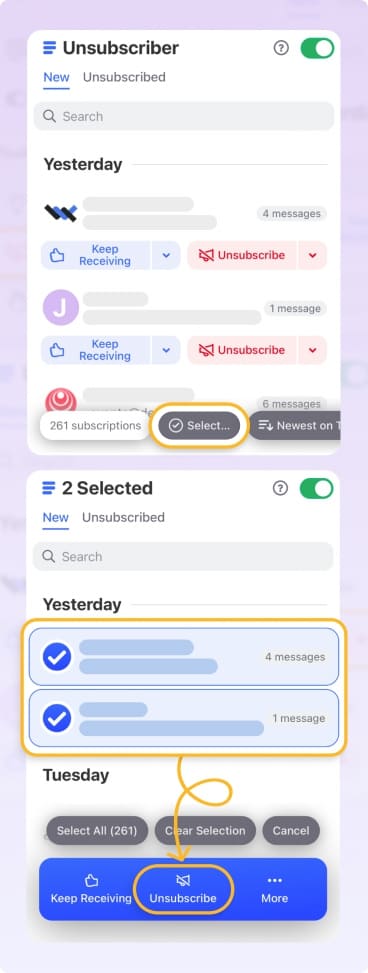
- Bulk Cleaning: Act on mass messages at one time. Use the bulk actions to easily archive or delete hundreds of emails in one fell swoop or the Cleaning Suggestions for an instant cleanup based on your previous actions.
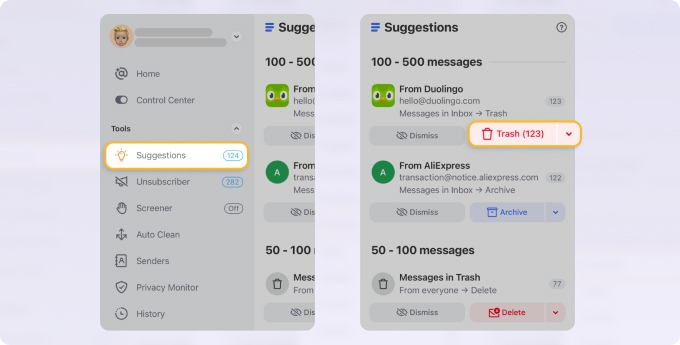
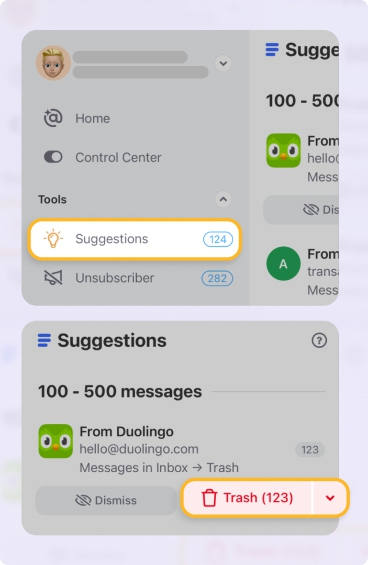
For a better overall experience in either the Gmail or Mail app, consider Clean Email. It’s safe to use, works with providers like Gmail, Outlook, and Yahoo Mail, and is available not only for iPhone, but on other devices including Mac, Android, and the web.
Will You Choose the Gmail app or Apple Mail on iPhone?
After reading through the feature comparison, pros and cons, and user opinion, which app will you pick for managing emails on your iPhone?
➡️ If you like the integration with Google services, powerful search feature, and ability to receive push notifications, then the Gmail app is for you.
➡️ If you like the seamless device syncing, enhanced privacy features, and optimized performance of a native app, then you should go with Apple Mail for your Gmail account.
Remember, you can still use tools like Clean Email to better manage your inbox no matter which email app you pick!


